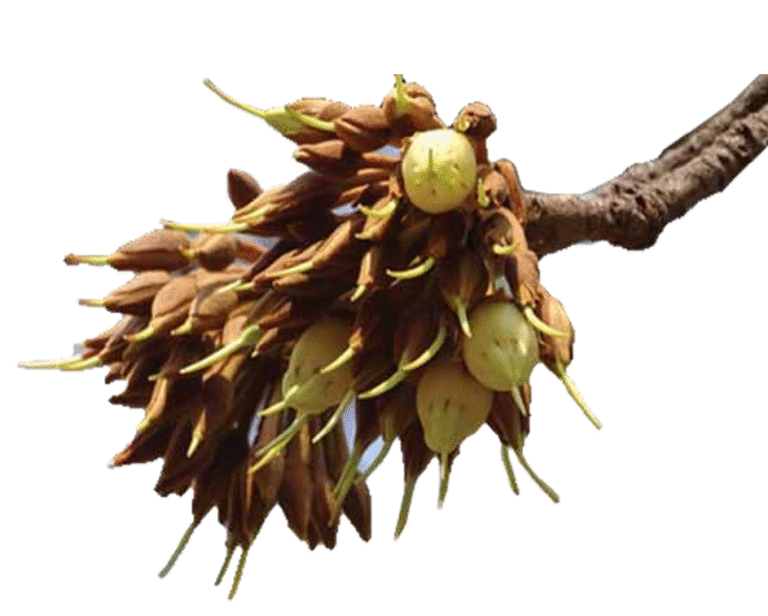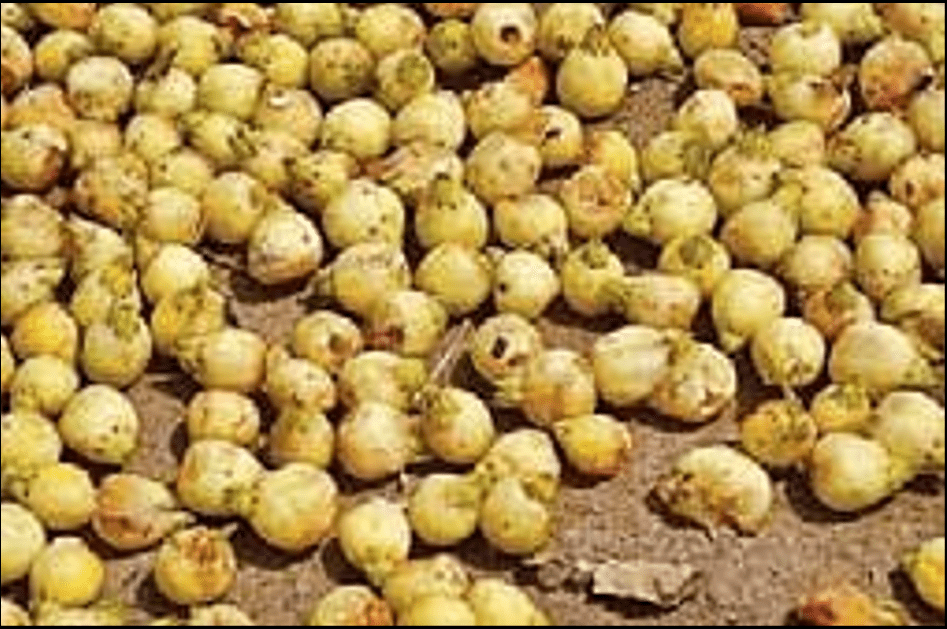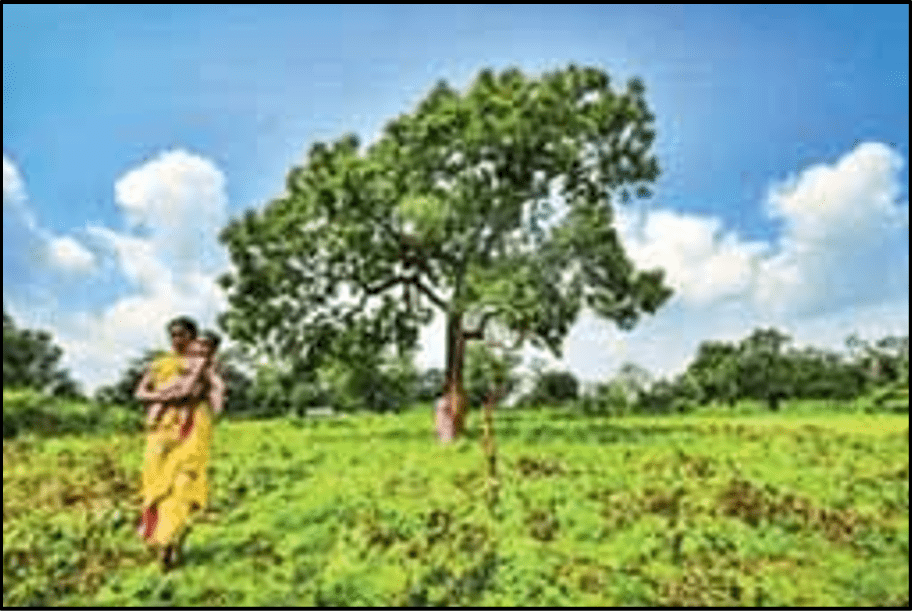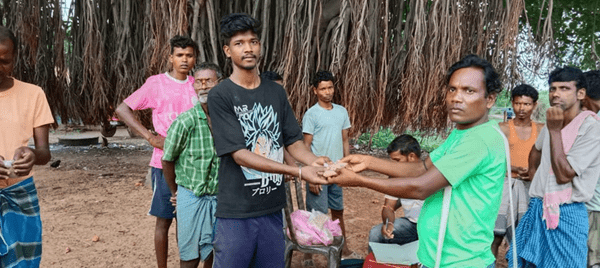
India with around 49,000 plant species so far known – there are wide varieties of such plants, which are traditionally used by the tribal for livelihood and have potentiality of commercial utilisation. If sustainably used, this could prove to be a boon to the traditional people living in close proximity of the forest lands. A few of such plants are Mahua, Rhododendron, Kachnar, Moringa, Palash, etc. Especially mahua is one such novel plant which is occupying a unique space in the ethnic as well as economic life of the indigenous community.
Mahua or the Indian Butter Tree scientifically known as Madhuka longifolia (Koenig) Macb. is one of the most important Indian forest trees not because of its timber but on account of its fleshy edible flowers.
Mahua trees are distributed from India to other Asian countries like the Philippines, Pakistan, Sri Lanka to Australia (Behera et al. 2016). In India, large numbers of mahua trees are found in the states of Uttar Pradesh, Madhya Pradesh, Odisha, Jharkhand, Chhatishgarh, Andhra Pradesh, Maharashtra, Bihar, West Bengal, Gujarat and Rajasthan. In West Bengal these trees are seen abundantly in Danga forests of Dakshin Dinajpur, Bankura, Purulia, Purba Medinipur and Birbhum.
The leaves of mahua contain organic matter, minerals, phosphoric acid, silica, alkaloids, flavonoids, protobassic acid etc. These are expectorant and also used for chronic bronchitis and cushing’s disease. The leaves are also used as poultice to relieve from skin diseases like eczema.
Mahua flowers are well known for its sugar property and nutrient content. India annually produces more than 10 lakh tonnes of mahua flowers. Adivasi women make laddus from the mahua flowers. The flowers contain vitamin C which acts as antioxidant and carotene, calcium and phosphorous besides fats and proteins. The flowers are widely used in traditional medicine as antibacterial, anthelminthic, analgesic, antioxidant and anti-cancerous bioresource.
The mature but unripe fruits are used in preparation of jam, marmalade or syrup, jelly (sometimes combined with guava). Mahua flowers are also mixed with these products for sweetening and flavour.
Apart from socio-economic aspects mahua tree fixes atmospheric nitrogen in soil, binds soil and check erosion.
After a hard day’s work in forest collecting fruits, flowers, roots, shoots, tubers, etc. and tilling whatever little land is there for cultivation, a glass of refreshing locally distilled liquor is most nourishing and rejuvenates the lost energy for most of the tribal communities. Octogenarian Raghu Soren could not recollect how long this practice is in vogue. He has seen his father and uncles regularly sat for a drinking and adda session each afternoon under this tree. He would listen about various political and social issues in their discussion. He met with his wife Rani Hansda under this very tree during one of this session. This adda session was a part of tribal society from time immemorial.

But things have changed a lot after the invasion of Foreign Liquors. Young generations who go to towns for labour work are exposed to this synthetic varieties which lacks the natural ingredients, purity and tradition. Drinking habits also changed from group drinking to drinking in private. The lack of raw materials and declining customer base is making the age-old ritual of mahua making a dying practice. New generation is not interested to learn the traditional knowledge about mahua making, which may extinct this ritual.
This traditional liquor has a good potentiality to revive the rural economy. Many entrepreneurs believe this liquor, consumed in many parts of the country, already has tremendous potential. Proper marketing through effective value chain could expose the spirit to different markets which may uplift the rural fiscal scenario. It could also lead to a new kind of tourism, hinged on the “mahua experience” if government approves the making and sale of the liquor on a larger scale.
Not only Mahua, there are different varieties of local brews made in our country. Goa (Cashew feni), Northeast (Rice bears), Rajasthan (Keshar kasturi), toddy versions in Kerala and Chhattisgarh are some of the notable contributors of this genre. But lack of legal endorsement and other facilities, as are showered on the IMFL versions, are not only defeating the spirit of entrepreneurship but also depriving the rural economy to revive & flourish.
There are age-old perceptions about the consumption of mahua , associating it with deep inebriation, moral laxity and tribal poverty. This perception continues to influence the way the government looks at mahua . There is a ban on the sale of mahua in government-regulated shops in many states as it is neither bottled nor branded. Independent India still follow the Mohwra Act 1892 (Banning making and selling of liquor made form mahua flower). Mahua dominated the life and culture of tribal communities till the British clampdown to safeguard their revenue from this home fermented and pot-distilled liquor. Mahua is currently relegated as ‘Country Liquor’ which is defeating its chance to be considered as one of the iconic brands like Mexican Tequila, American Bourbon or Champagne of France. Many popular alcohols across the globe were first consumed as country liquor which later evolved and found wider markets after international standards for distillation were developed.

According to a report the annual turnover of a mahua producing area is around Rs. 50/- to 60/- lakh crore depending on the season. A bottle of mahua in a tribal area is sold for around Rs. 200/-. If properly produced and bottled it would cost Rs. 1,000/- including export and import duties, excise and GST, and the cost of transporting.
Lack of legal endorsement is helping the middleman to exploit the tribal community and cornering the profit. Legal help can promote livelihood schemes in tribal forest areas to a great extent as the tribal constitute over 8% of our population.
A Non-Timber Forest Products (NTFP) centric holistic development model for tribal-forest areas can usher in a new era. Re- forms may be initiated by (a) reforming the trade to make it fair & equitable to the tribal gatherer; (b) promoting local level primary value addition; (c) doing everything neces- sary to increase production; (d) facilitating technological upgradation from production to sale at the best price through market in- telligence. If integrated with the implemen- tation of Biological Diversity Act, 2002 which advocates for access to biological resources and sharing of benefits arising from their utilisation, it could be a game- changer for the dismal rural economy and tribal lives. SHGs in coordination with Biodiversity Management Committees can be fruitfully engaged after training and provision of equipment. By convergence with various development schemes under Mahatma Gan-dhi NationalRural Employment Guar- antee Act (MGNREGA), 2005 and others, it would leverage the funds necessary for the working capital re- quirements. Corporates can also be encouraged to utilise their Corporate Social Responsibilities (CSR) funds to develop infrastructure and marketing.
With the national government promoting traditional culture, ease of doing business to make India emerge as‘Atmanirvar Bharat’, it is time to forgo some still vogue out-dated laws & acts which do not fit-in today.
Biodiversity is the most important natural element for bringing down poverty, developing sustainable livelihoods and helping communities to adopt with climate change effect. An appreciable percentage of the tribal people live in forests and forest fringe areas. They are mostly dependent on wild plant resources and some subsistent farming for their sustenance. Mahua is one of those bio-resources which are directly linked to livelihood development of the tribal in the form of 3 F’s – feed, fodder and fuel. But due to lack of infrastructural facilities like post-harvest storage and modern technologies for value addition at source is hindering the optimal potentiality and boon for the poor tribal
Disclaimer: This article was previously published in the monthly Bulletin of Asiatic Society in July–Sept 2021 version of Vol I, No. 7–9.



